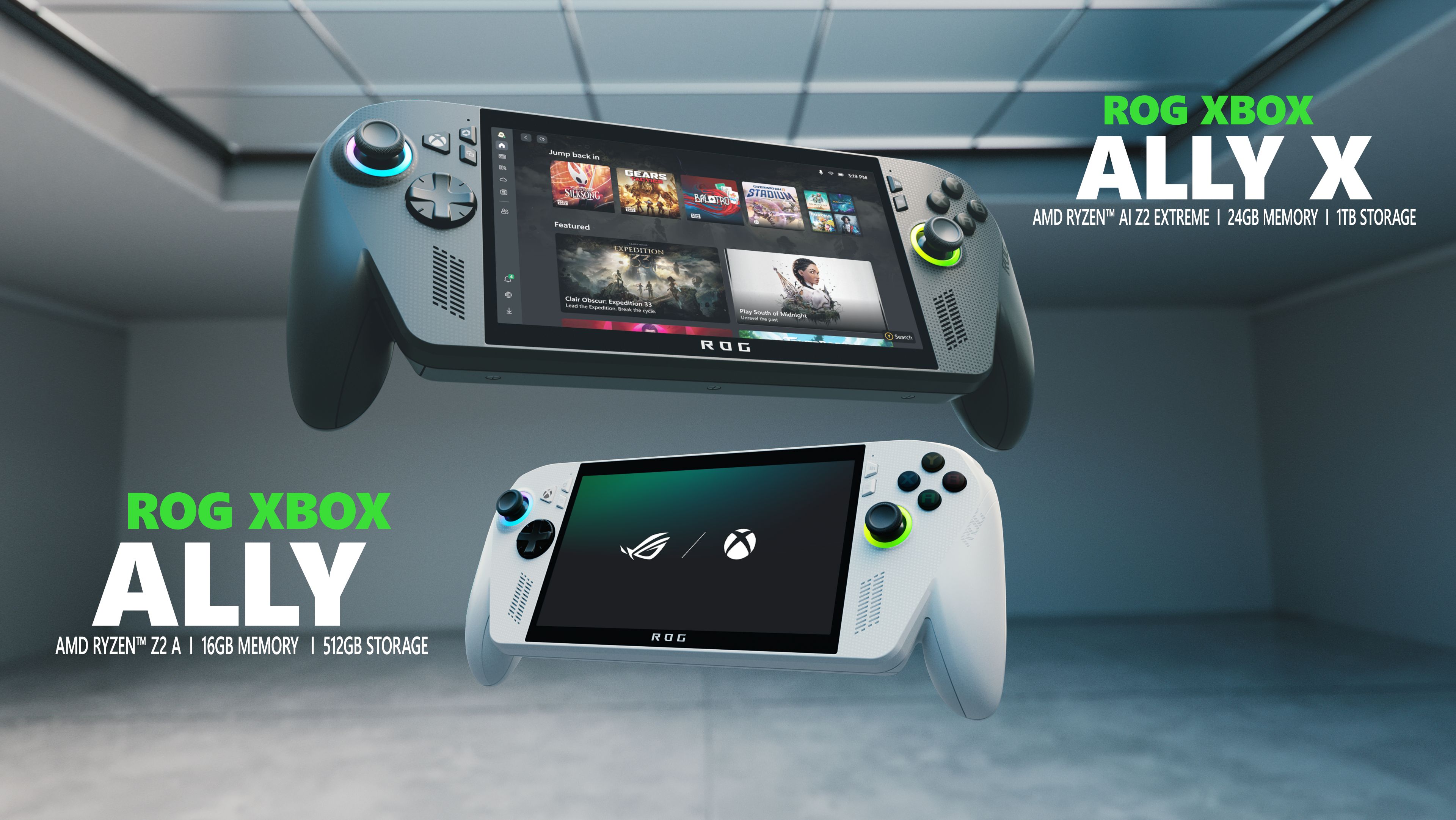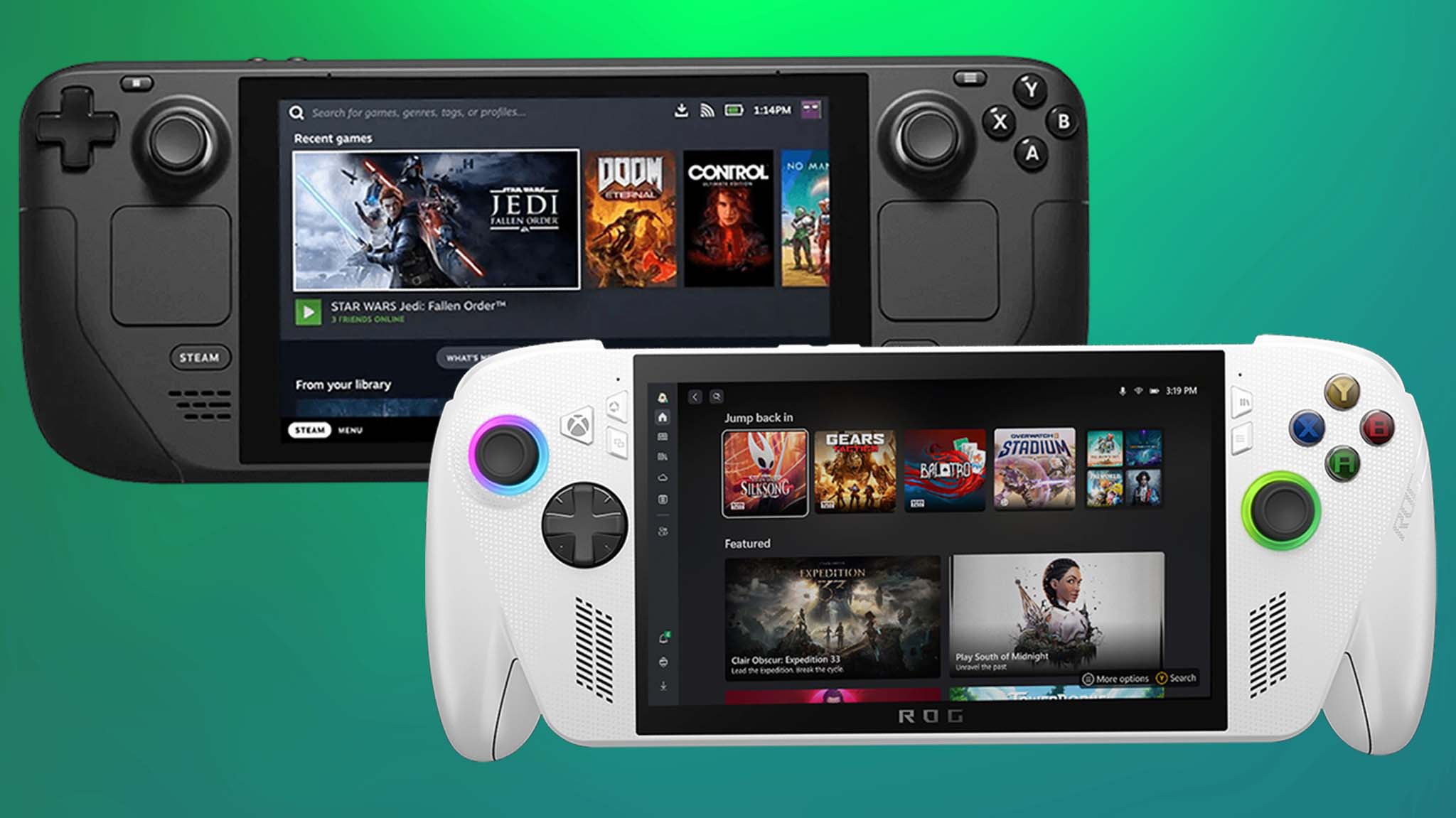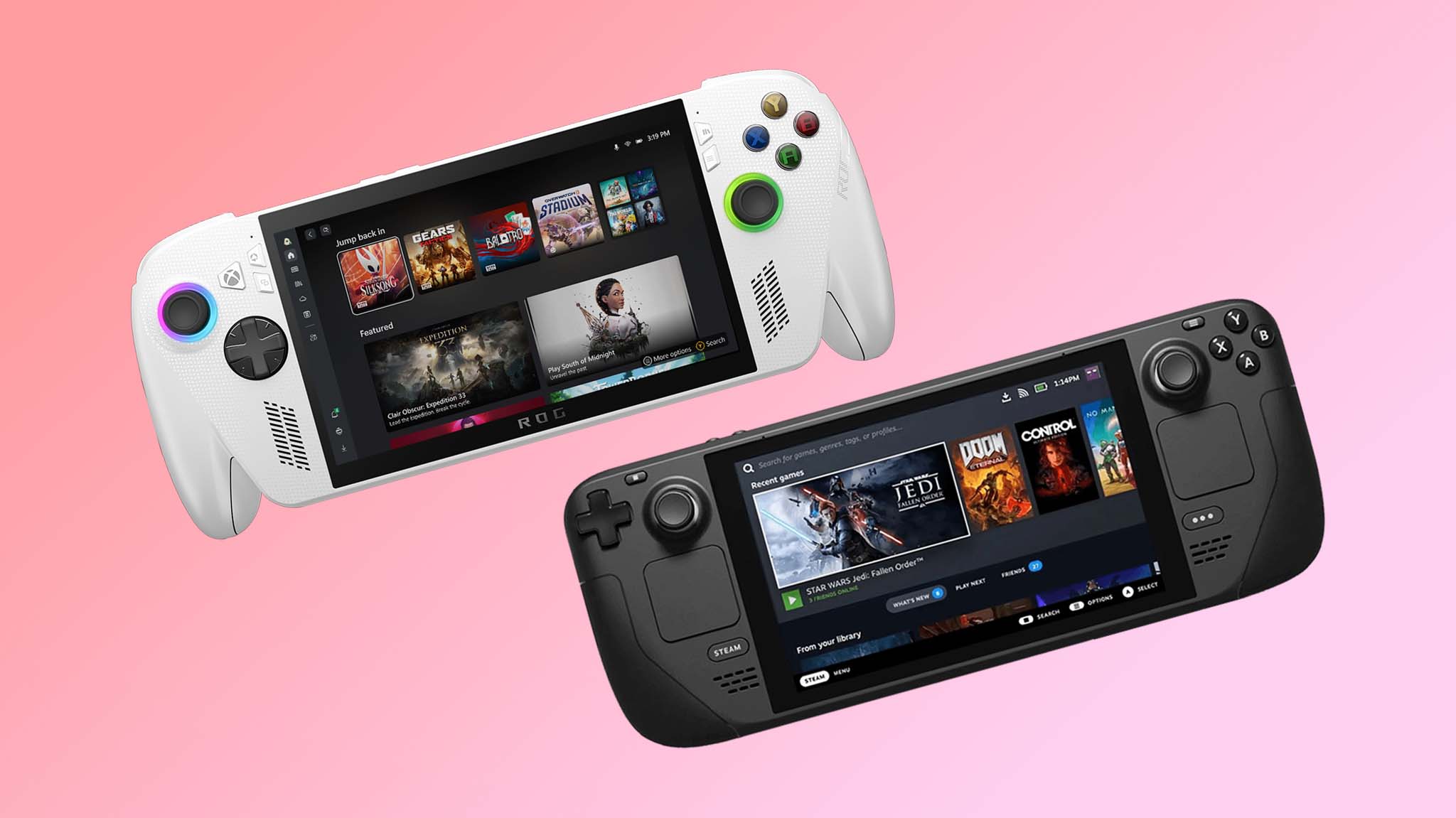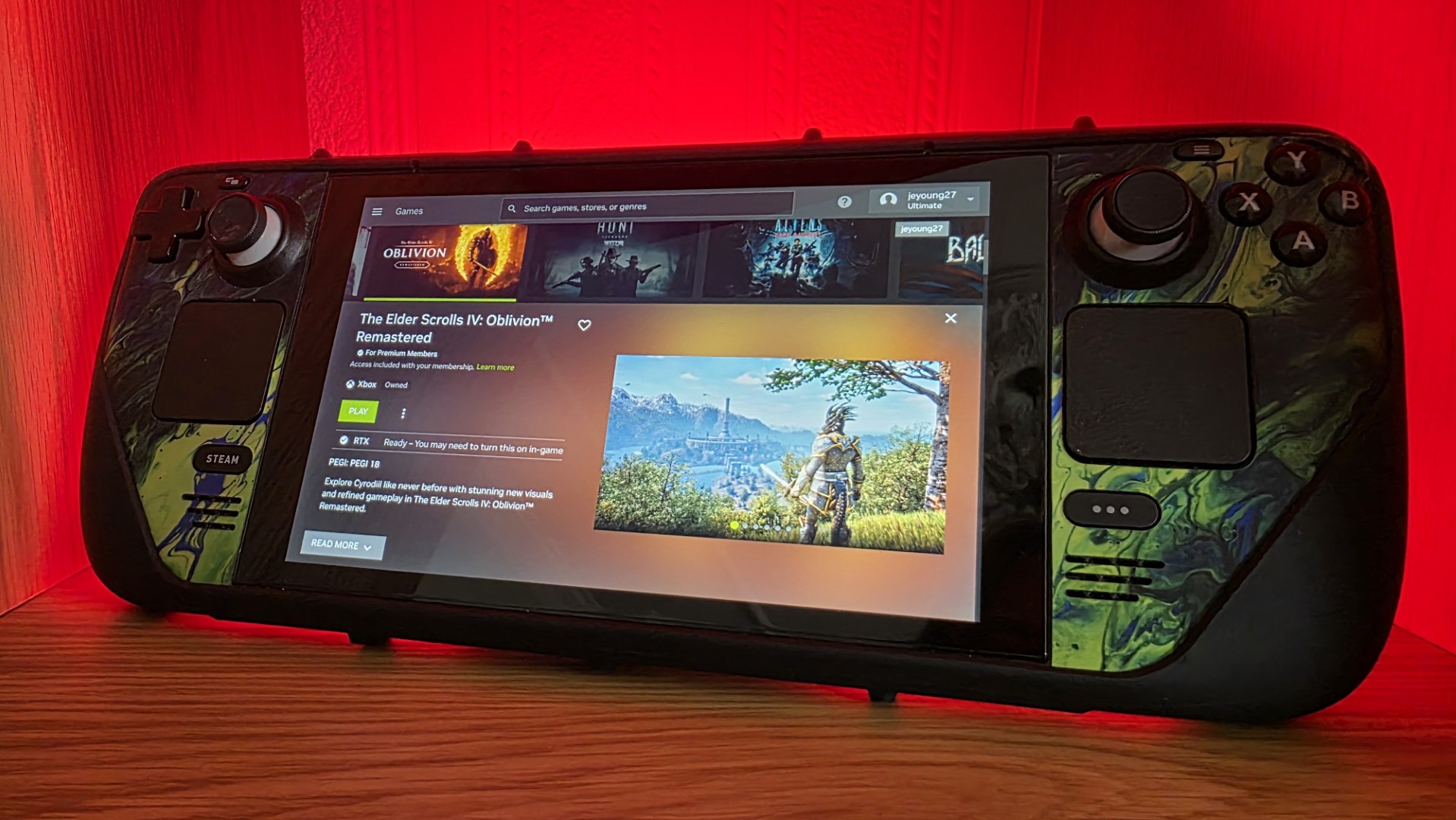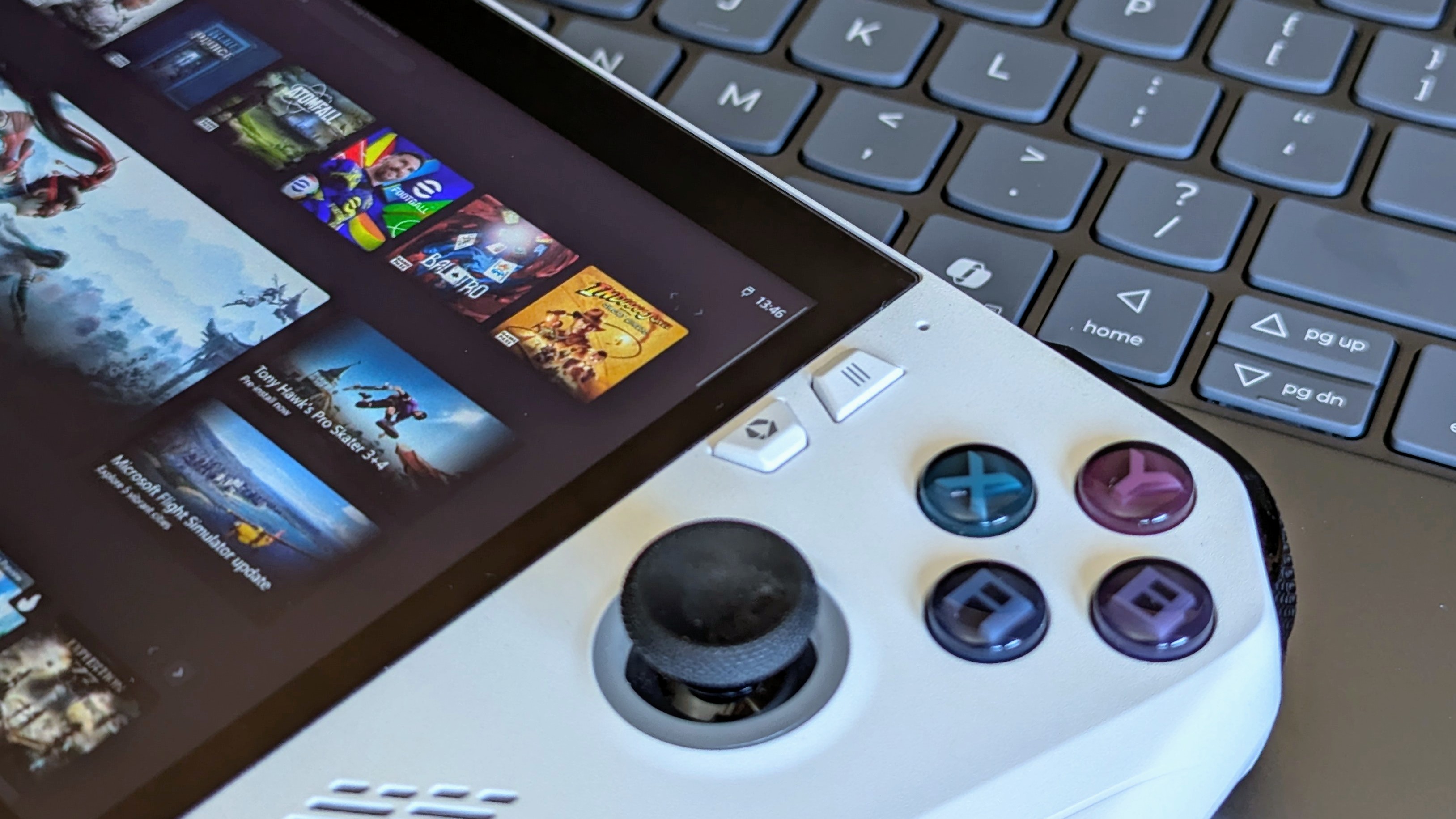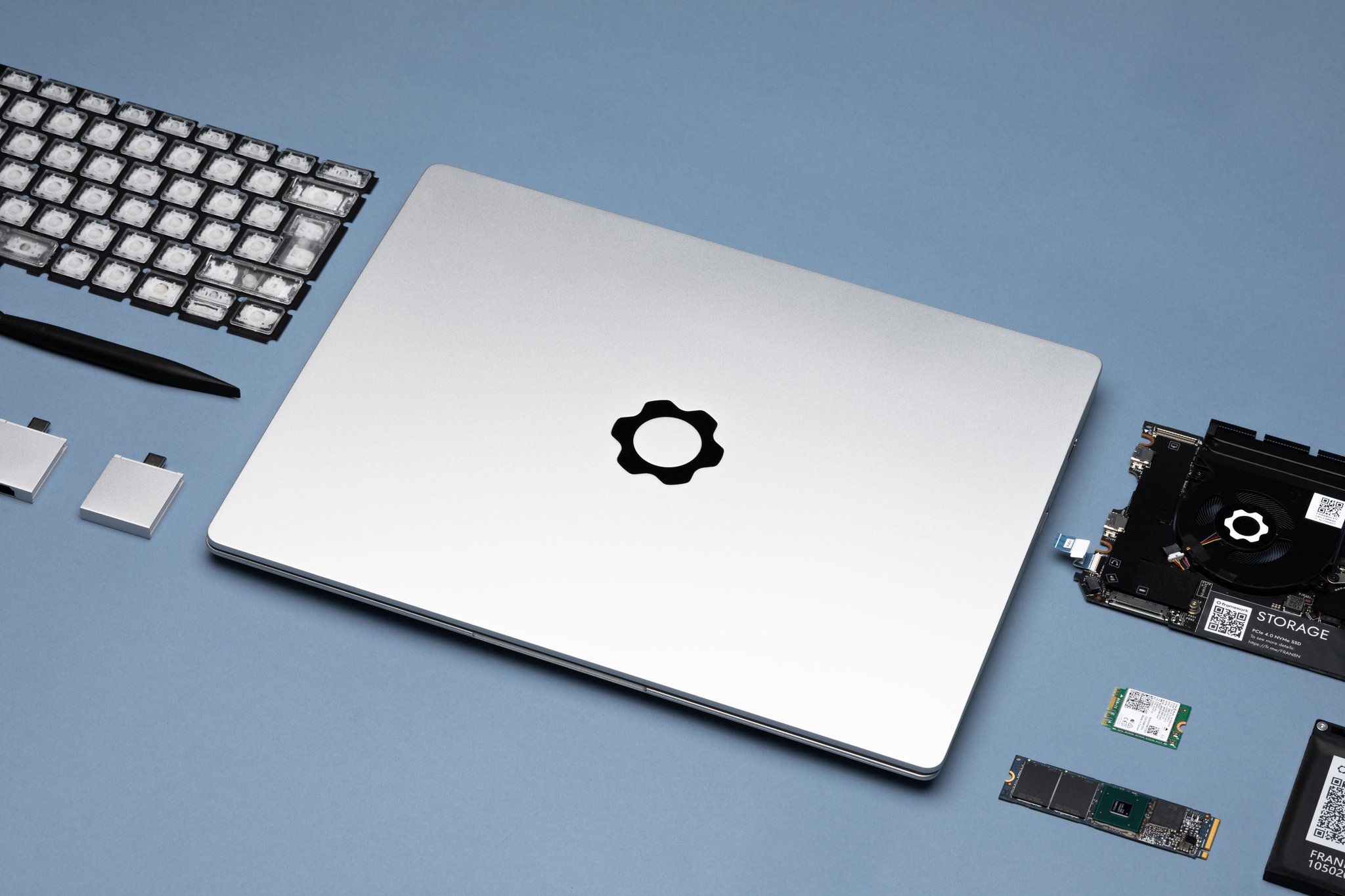Xbox Ally isn’t fazed by Switch 2’s dominance — The PC gaming handheld is battling an entirely different competitor
Nintendo Switch 2 is going to sell better than other handhelds combined this year. Here's why that's nothing for Xbox Ally to worry about.
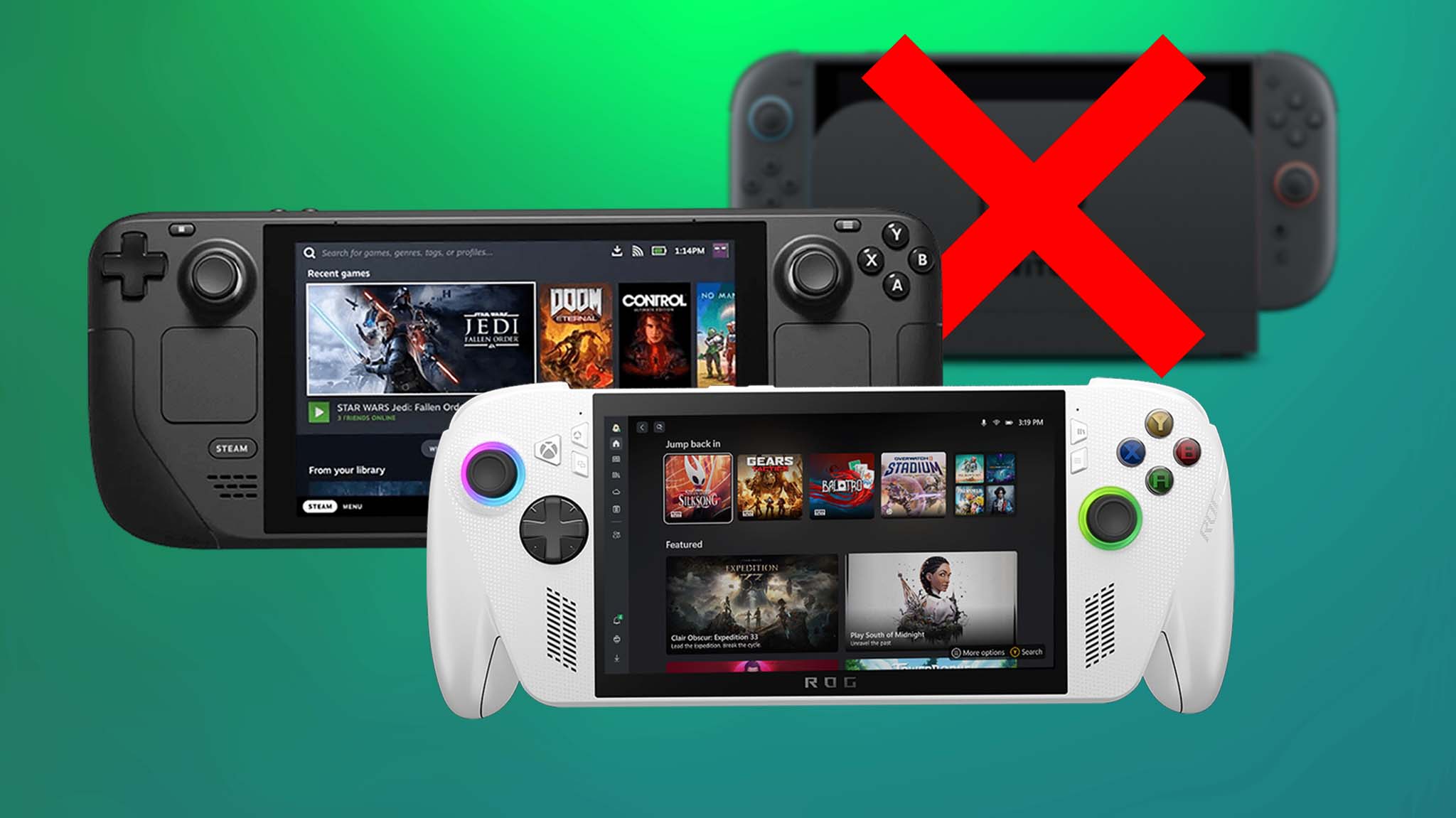
Earlier this month, Ampere analysts said that the Nintendo Switch 2 is going to outsell all other gaming handhelds combined this year. While this sounds like a reason for the teams behind the Xbox Ally and Steam Deck to panic, it really isn't.
In fact, it's a disservice to compare the Switch 2 against Xbox Ally or against the Steam Deck because, while they are all handhelds, the last two really aren't direct competitors with Nintendo's hybrid console.
The real battle is Windows versus SteamOS on PC gaming handhelds.
Microsoft knows it. ASUS ROG knows it. That's why the starting Xbox Ally (which is Xbox in name only) has specifically been positioned to compete against the Steam Deck rather than the Switch 2.
With added support under the Xbox name, this PC gaming handheld might just do it, if Microsoft does its part right.
Xbox Ally and Steam Deck have very different focuses than Switch 2
Before we go any further, I want to clear up this odd notion that Xbox Ally is a direct competitor with Switch 2.
I'll concede that you can say that the Switch 2 is a competitor to Steam Deck and Xbox Ally in a broad gaming sense, in the same way that cloud gaming on your phone is a competitor to local console gaming on Xbox Series X.
All the latest news, reviews, and guides for Windows and Xbox diehards.
But otherwise, the two devices have far too different focuses, functions, and audiences to be immediate rivals.
Leading analyst firm Ampere says more Switch 2 consoles will be sold this year than the PC gaming handheld landscape has sold in its entirety. It says that while 56% of Steam Deck owners use a Switch, only 1.3% of Switch owners consider Steam Deck to be their primary console.June 4, 2025
I could write a whole page about this topic, but suffice it to say that Nintendo strategically and intentionally uses outdated hardware so that it can focus more on creating unique experiences.
This strategy also allows the Japanese gaming company to have a larger return on investment since it costs less to manufacture consoles and also appeals to a broader audience through their budget sensibilities.
Xbox and ASUS ROG, on the other hand, tend to use current-gen hardware and cutting-edge tech.
What's more, Nintendo focuses on single-player and couch co-op innovation with its own IP (intellectual property) and peripherals while ASUS ROG and Valve's handhelds are more focused on single-player and online multiplayer PC games made by third-party devs (and yes, I know Valve makes games, but not to the same extent).
And sure, the Switch 2 can play heavily optimized AAA games like Cyberpunk 2077 just like a PC gaming handheld, but it still can't run the latest graphically demanding PC games that are more suited to Xbox Ally and Steam Deck PCs.
Additionally, unlike the Steam Deck and Xbox Ally, the Switch 2 isn't designed to give users the freedom of a personal computer to access a desktop or browse the internet. It's intended solely as a gaming machine (although there is a hidden web browser workaround).
All you have to do is compare the Xbox Ally's specs to the Steam Deck's and you'll see they're far more similar than you'd initially expect.
The Xbox Ally specs specifically target the Steam Deck
I previously compared the Xbox Ally vs the ROG Ally, since the two PC gaming handhelds both come from ASUS ROG.
However, it was while looking into these devices that I realized that the Xbox Ally is more comparable to the Steam Deck in many ways (as seen in my Xbox Ally vs Steam Deck comparison).
For starters, the white Xbox Ally has 16GB RAM and 512GB SSD, which is similar to what's found in the 512GB Steam Deck OLED. Many premium handhelds are going with 32GB RAM and 1TB SSD, so Xbox Ally's specs are somewhat modest and closer to the Steam Deck's.
Contrary to what you might think, the Xbox Ally also uses a new AMD Ryzen Z2 A SoC (system on a chip) that actually uses the same archaic architecture used in the Steam Deck's custom AMD APU (accelerated processing unit). Both chips have four CPU cores with eight threads, and eight CU (Compute Units).
Processor | CPU Cores & Threads | GPU Cores | TDP |
AMD Ryzen AI Z2 Extreme (Xbox Ally X) | 8 cores, 16 threads w/ XDNA2 NPU (Zen 5) | 16 CU (RDNA3.5) | 15-35W |
AMD Ryzen Z2 A (Xbox Ally) | 4 cores, 8 threads (Zen 2) | 8 CU (RDNA2) | 6-20W |
Custom AMD APU (Steam Deck LCD) | 4 cores, 8 threads (Zen 2) | 8 CU (RDNA2) | 4-15W |
Custom Nvidia Tegra T239 (Switch 2) | 8 ARM Cortex-A78C cores, Unknown threads | Unknown | 5-30W (Depending on the mode) |
Custom AMD APU (Steam Deck OLED) | 4 cores, 8 threads (Zen 2) | 8 CU (RDNA2) | 4-15W |
You can learn more at our AMD Ryzen Z2 Series processor guide for gaming handhelds.
What that means is that the Xbox Ally's processor is going to be on a very similar level to the Steam Deck's, and might even be less powerful than the Z1 Extreme processor used in the last-gen ROG Ally.
The Xbox Ally having a less powerful processor than other PC gaming handhelds might seem counterproductive, but it's actually a really smart move from ASUS ROG and Xbox's part and shows that the Xbox Ally is intended specifically as a Steam Deck competitor that runs Windows.
In all reality, the Xbox Ally is the flagship in a battle for Windows gaming handhelds against SteamOS handhelds, and that's why Microsoft has become involved.
It's smarter to compete against the aging Steam Deck than the brand-new (and thriving) Switch 2
Outside of the Xbox Ally and Switch 2 not being direct competitors, there is one main reason why it's smarter for the Xbox Ally to compete against Steam Deck rather than Switch 2 — The timing is right to try and usurp Steam Deck's place, but it would be futile to go after Switch 2.
The Switch 2 just released on June 5, 2025, and had one of the biggest console launches in history, selling over 3.5 million units worldwide (thanks, Bloomberg). It's expected to have a very successful year. Now is not the time to try and uproot it.
The same can't exactly be said about the Steam Deck, though.
To be clear, the Steam Deck has been very successful since it launched in 2022. However, several OEMs (original equipment manufacturers) have since entered the PC gaming handheld scene with their own premium devices that offer high-end performance at a dearer cost.
The Steam Deck has managed to maintain its crown as the most popular PC gaming handheld for a few reasons, but one of the biggest is that it has an affordable price point while still offering solid performance.
However, the Steam Deck is starting to show its age. It often cannot run the latest graphically demanding games that work just fine on competitors like ROG Ally, Lenovo Legion Go, and MSI Claw 8 AI+.
As our sister site, Tom's Guide, has previously explained, it's also unclear if or when a Steam Deck 2 will launch.
So, now is the time for competitors to try and pry off Steam Deck's PC gaming handheld crown in this gap before a new Valve device ascends to the throne or is even announced. And that's precisely what Xbox Ally is attempting to do.
Xbox + ASUS ROG is a match made in PC gaming handheld heaven
Outside of the Steam Deck, the ASUS ROG Ally is the most popular PC gaming handheld. So, Xbox joining forces with ASUS ROG is a very clever plan.
Xbox branding and a new Windows 11 revamp for gaming handhelds that attempt to behave more like SteamOS could solve many of the problems people have with Windows handhelds, if done correctly. The need to get this right is dire now that SteamOS is basically available for any device.
Now, the price of the Xbox Ally hasn't been released just yet. But the fact that the Xbox Ally doesn't have an OLED display, is going with a simpler processor, and has modest memory and storage capacity tells me they're trying to be more budget-conscious than many other PC gaming handhelds.
As my colleague has previously written, Xbox Ally needs to be competitively priced with the Steam Deck in order for it to succeed.
We've already seen a Steam Deck competitor in the form of the Legion Go S SteamOS, but its higher price point than the Steam Deck has deterred people from buying it. So it's crucial that the Xbox Ally gets its pricing right.
Here's hoping Xbox Ally plays its cards right
There you have it. The Xbox Ally and Steam Deck are direct PC gaming handheld competitors, while the Switch 2 is in its own tier as a hybrid console.
I love my Steam Deck, but it is starting to feel old and cannot keep up with many of the latest and greatest games I want to play on it. Since there's no due date in sight for the Steam Deck 2, now is the perfect time for Xbox and ASUS ROG to jump in with a similar-yet-improved device.
If Microsoft manages to greatly improve the Windows experience on gaming handhelds, like it's trying to do, then it could get rid of many of the problems people have with PC handhelds. Microsoft's main goal, though, is to kick SteamOS off the handheld throne, and the Xbox Ally is its best chance at doing that.
We'll have to wait and see what they've cooked up.

Self-professed gaming geek Rebecca Spear is one of Windows Central's editors and reviewers with a focus on gaming handhelds, mini PCs, PC gaming, and laptops. When she isn't checking out the latest games on Xbox Game Pass, PC, ROG Ally, or Steam Deck; she can be found digital drawing with a Wacom tablet. She's written thousands of articles with everything from editorials, reviews, previews, features, previews, and hardware reviews over the last few years. If you need information about anything gaming-related, her articles can help you out. She also loves testing game accessories and any new tech on the market. You can follow her @rrspear on X (formerly Twitter).
You must confirm your public display name before commenting
Please logout and then login again, you will then be prompted to enter your display name.
